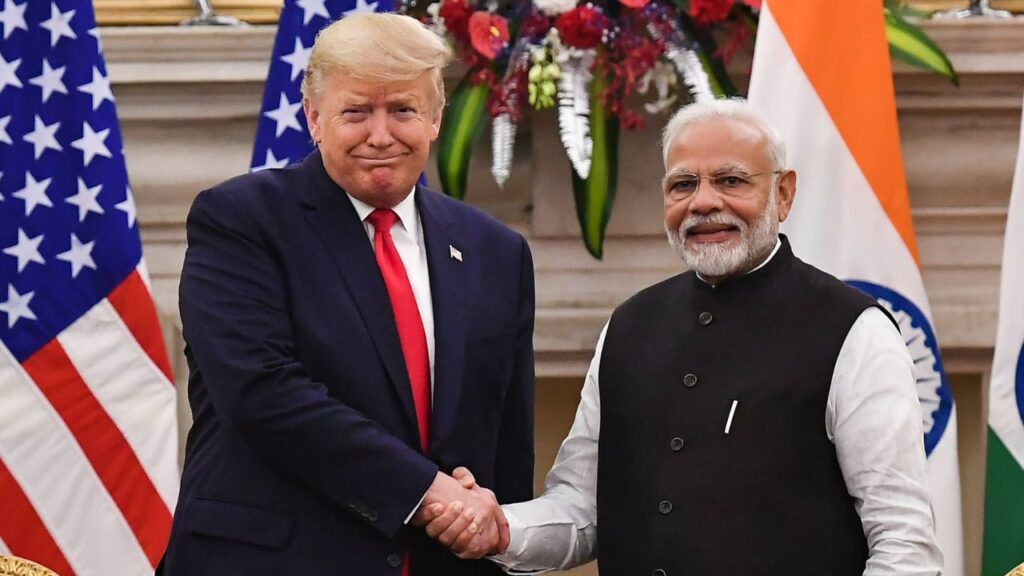As former President Donald Trump secures a second term in the White House, India and the United States find themselves on the cusp of a significant opportunity to recalibrate their bilateral ties. Unlike his predecessor, whose approach to India was often clouded by ideological differences and concerns over human rights, Trump’s renewed leadership could usher in a more transactional and strategic partnership, driven by mutual benefits rather than overarching ideology.
Shifting Dynamics in South Asia and the Indo-Pacific
Trump’s “America First” mantra combined with a focus on domestic priorities will likely lead to increased US isolationism. Ironically, this shift could provide India with the room it needs to assert itself more freely in South Asia and the Indo-Pacific. With fewer American efforts to influence regional developments, India could expand its geopolitical influence, counter China’s growing power, and stabilize its immediate neighborhood.
The Biden administration’s tenure had left India wary due to allegations of political interference and human rights concerns, but Trump’s approach may be different. As the US disengages somewhat from global leadership, India could find more autonomy in shaping regional affairs.
Moreover, the Quad, a strategic group comprising India, the US, Japan, and Australia, may gain more muscle in response to shared concerns over China. This could eventually lead to joint defense deployments, signaling a collective regional approach to counterbalance Beijing’s influence.
A Strengthened India-US Strategic Partnership
Trump’s re-engagement with India will not merely focus on countering China; India will likely be recognized as a crucial partner in maintaining stability across the Indo-Pacific. Unlike prior administrations, Trump’s America might not seek to dominate every regional theatre, allowing India greater influence in shaping its own foreign policy. With Republicans controlling the US Senate and Congress, stability in policy-making could be expected, facilitating smoother cooperation between the two nations.
The Trump administration may also look to scale down the influence of the US State Department, historically perceived as critical of India. Under Trump, the tone of US diplomacy could shift towards more pragmatic collaboration, focusing on defense, technology, and space cooperation, where the two countries share growing interests.
Trade and Immigration Challenges
While the defense and strategic sectors are likely to see increased cooperation, trade and immigration remain areas of concern. Trump’s protectionist stance, characterized by tariffs and trade renegotiations, could create tensions, particularly for India’s key export sectors like IT, pharmaceuticals, and textiles. During his first term, Trump criticized India’s tariff policies, and a return to power might see him pushing for reciprocal trade measures, which could complicate India-US trade relations further.
India’s IT industry, which is a cornerstone of its exports to the US, could face greater scrutiny, particularly with H-1B visa applications. This may pose challenges for Indian tech firms that rely heavily on skilled workers in the US. Trump’s immigration policies could affect the number of work visas allotted and increase the difficulty of obtaining them, adding an extra layer of complexity to bilateral trade.
Additionally, Trump’s potential tariff hikes and an overarching focus on “America First” could strain the $190 billion annual trade between the two countries, leading India to navigate these trade frictions carefully.
India’s Strategic Choices
Despite these trade-related challenges, there are also significant opportunities for India. As US firms look to de-risk from China, India stands to benefit from increased investments and supply chains that move away from China. Moreover, India’s growing role in the defense and technology sectors could be further solidified, creating avenues for deeper bilateral engagement.
For India, managing its relationship with Trump’s administration will require pragmatic diplomacy. In defense, technology, and perhaps even military cooperation, India may need to take on a more prominent international role. At the same time, it may need to offer US companies greater access to Indian markets, marking a shift from the past in which trade was heavily tilted in favor of the US.
A Changing Geopolitical Landscape
As Trump navigates global challenges, including the ongoing Russia-Ukraine war and escalating tensions in Gaza, India could become a key player in US-led efforts to stabilize these regions. The two nations’ shared interests in countering China’s influence and securing peace in South Asia could create more collaborative opportunities, with India playing a central role in managing the delicate balance between regional stability and global power shifts.
However, Trump’s isolationist tendencies and his skepticism about multilateralism could lead to a more transactional approach to foreign relations, potentially resulting in fewer long-term strategic commitments from the US. This could be both a challenge and an opportunity for India, which will need to adapt to the shifting landscape while ensuring its own interests are protected.
Conclusion
Trump’s second term offers India a rare chance to reshape its relationship with the US, with both opportunities and risks on the horizon. The growing strategic alignment between India and the US, particularly in defense and technology, could help the two nations navigate global challenges more effectively. However, trade and immigration issues remain delicate, and India will need to tread carefully to balance cooperation with pragmatic responses to Trump’s economic policies.
As India looks to strengthen its global role, it must be prepared to adapt to an evolving US administration, with its unpredictable leadership style and shifting priorities. Yet, with the right approach, India could capitalize on the opportunities presented by Trump’s “America First” doctrine to enhance its influence on the world stage.

